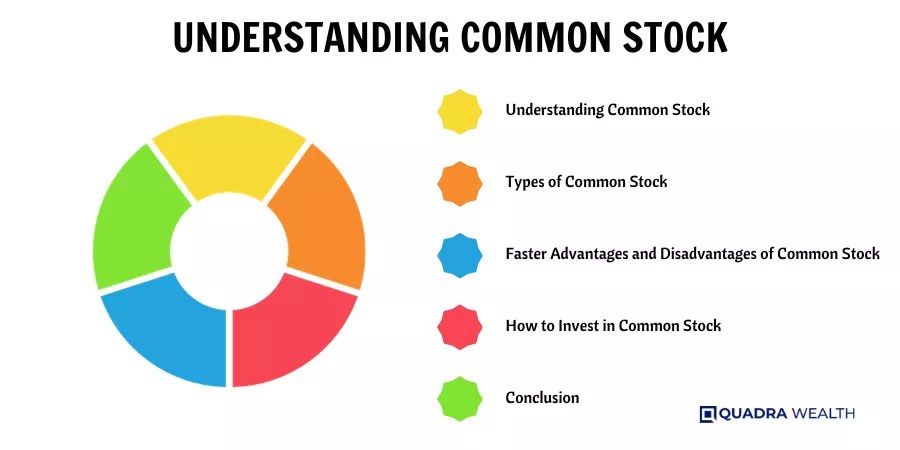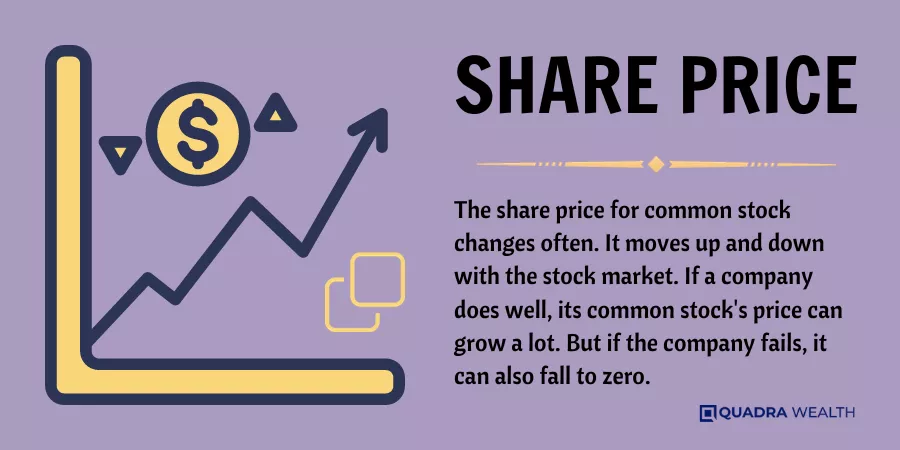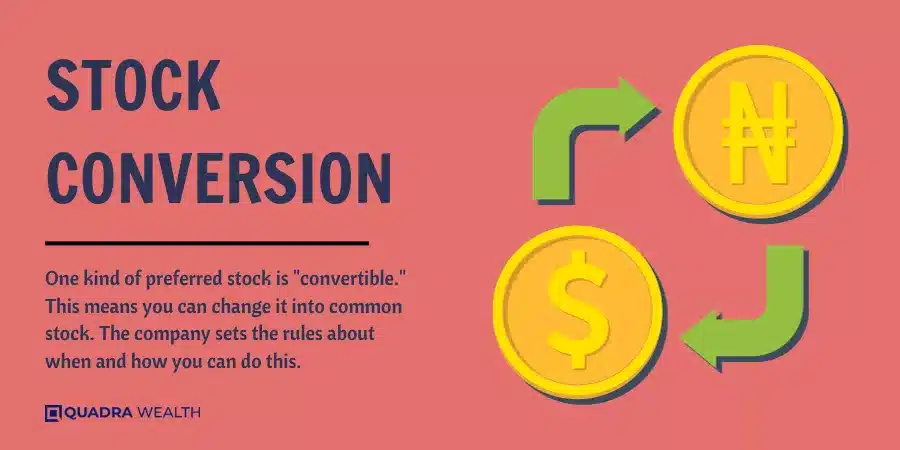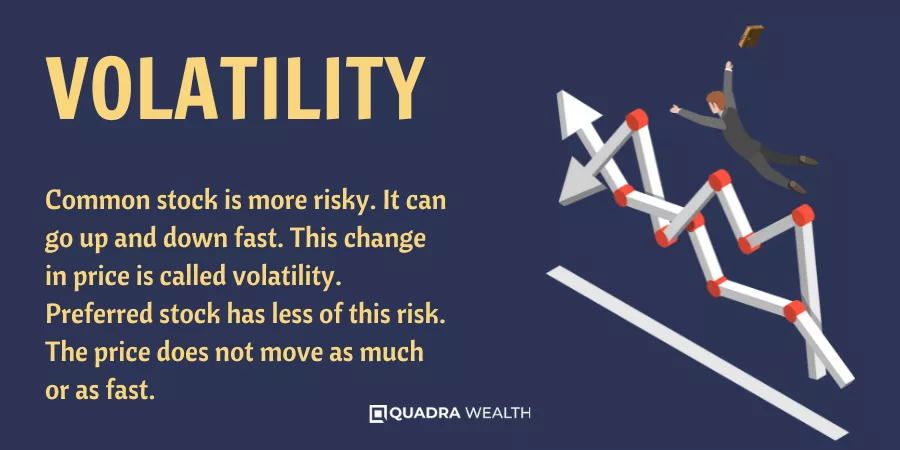Are you considering investing in stocks but unsure whether to opt for common or preferred shares? Preferred and common stocks are the two types of stock that companies issue to investors.
This blog offers a comprehensive guide on the differences, advantages, and disadvantages of each type for informed decision-making.
Get ready as we delve into details, helping you understand how these investment options can impact your financial goals!
In the discussion of which is better between common stock is that preferred stock, it’s important to note that preferred stock is a types offers priority when it comes to receiving dividends and in the event of company liquidation, as well as a fixed dividend rate.
Key takeaways
●Common stock may gives you part stock ownership in a company. You can vote on big choices and earn money if the company does well.
●Preferred stock dividends offers fixed and its price is more stable. But, you usually can't vote on company matters.
●When a company ends, preferred stock owners get money first. If any money is left, common shareholders get it next.
●Choosing preferred or common stock depends on your goals. For long - term growth go for common stocks; For steady income without much risk choose preferred stocks.
Understanding Common Stock
Common stock is usually a type of investment that gives shareholders ownership in a company, allowing them to profit from the business’s future successes.
As common stockholders, they possess voting rights to influence corporate decisions and are privy to dividends declared by the board of directors.
However, this equity stake comes with risks including share price volatility largely dependent on business performance and market conditions. Additionally, if bankruptcy occurs, these shareholders fall behind creditors and bondholders when it comes to claim on the company’s assets.

Advantages of Common Stock
Common stock has several benefits that make it a good pick for some investors.
- Ownership in a company: Buying common stock gives you part ownership in the business.
- Voting rights: Common stock provides shareholders with voting rights. You can help make big decisions for the company.
- Dividends: While not promised, dividends can be a nice bonus for owning common stock. The amount can change over time based on the company’s earnings.
- Long-term growth: Over time, common stocks tend to return more money than bonds and preferred shares.
- Profit from success: If the business does well, the stock price goes up. This is how you make money through common stocks.
- Unlimited potential: There isn’t a cap on how much money you can make from stocks if the company does well.
Disadvantages of Common Stock
Let’s dive into the downsides of owning common stock:
- No fixed dividend: Common stock does not promise a set payout. Many companies choose not to give dividends to common stock owners.
- Risk of loss: The value of common stock can change a lot due to market forces like supply and demand. This can lead to losses for the stock owner.
- Lower claim on earnings: When a company has to pay off debts, common stock owners are not the first in line. They rank lower in getting a share of the company’s assets and income during hard times.
- No voting rights: Unlike those who own preferred stocks, common stock owners usually do not have a say in company decisions.
- High risk, high reward: Owning common stock can bring big gains if the company does well. But it also brings bigger risks if things go wrong.
- Potential for higher returns through capital appreciation
- Voting rights in corporate decisions
- Opportunity to benefit from the company's growth and success
- Volatility in share prices leading to higher risk
- Lower priority in receiving dividends compared to preferred shareholders
- Limited protection in the event of company bankruptcy
Understanding Preferred Stock
Preferred stock represents a degree of ownership in a company but generally doesn’t come with the same voting rights that common stockholders have.
It offers advantages such as fixed dividends, which are paid before any dividends are given hold common stock, making it an attractive option for income-focused investors.
However, the growth potential of preferred stocks is often limited compared to common stocks.
Additionally, companies may have the right to buy back preferred shares at a predetermined price leaving investors vulnerable to call risk – the possibility of their investment being forcibly liquidated at an inconvenient time.
This type of stock can be further divided into cumulative and noncumulative types based on dividend payment conditions. Understanding these factors is key when considering investing in preferred stocks.

Advantages of Preferred Stock
Preferred stock comes with many benefits. Here are some:
- Fixed Dividends: Value of a preferred stock offers fixed dividends. These payments are often guaranteed for forever.
- Higher Dividends: The dividends from preferred stocks can be higher and more steady than common stocks.
- More Rights to Company’s Money and Things: If a company ends, the people who own preferred stocks get first pick at the money and things left over.
- Money Comes First: If a company doesn’t pay its dividend, it has to pay any unpaid ones to the people who own preferred stocks before they pay those with common stocks.
- No Voting Rights: Preferred stock owners do not get a say in how the company is run.
- Money Can Go Down: The worth of preferred stock can go down when interest rates go up.
- Better For Your Wallet: Preferred stock is usually better for those looking for regular income instead of long-term growth.
Disadvantages of Preferred Stock
Preferred stock has some downsides too. Let’s look at a few of these:
- No voting rights: If you buy preferred shares, you usually can’t vote on things the company does.
- Value changes with rates: The worth of your stock can go down if interest rates go up.
- Fixed dividends: You get the same amount of money each time, even if the company makes more profit.
- Dividend yield maths: To find out how much money your stock makes, you have to do some math. Divide the dividend by the price of the stock.
- The callability feature: After a set time, the company may choose to buy back its shares from you.
- Risk during liquidation: If the company loses all its money and has to sell everything it owns, preferred shareholders are paid before common shareholders. But other people like creditors and bondholders will be paid first.
- Preferred stockholders receive before dividends to common stockholders
- Preferred stock often provides a fixed dividend amount, offering more predictable income
- Preferred stock prices are generally less volatile than common stock
- Preferred stock can offer potential for price appreciation along with steady dividends
- Preferred stockholders usually have limited or no voting rights in company decisions
- Price than preferred stock can be influenced by changes in interest rates, impacting their market value
- The fixed nature of preferred stock dividends may not keep pace with inflation
- In the event of company liquidation, preferred stockholders are paid after bondholders and creditors
Comparing Common Stock vs. Preferred Stock
In this section, we delve into a detailed comparison between common stock vs preferred stock, focusing on vital factors such as share price, income potential, dividend payments, possibility for stock conversion, granting of voting rights to shareholders and volatility.
When comparing common shares vs preferred shares in the debate of which is better, it’s essential to understand the unique characteristics of each.
Shares of common stock represents equity ownership in a company, providing potential for capital appreciation and voting rights at shareholder meetings.
Additionally, we’ll discuss how each type of stock is treated in scenarios like bankruptcy or company liquidation.

Share price
The share price for common stock changes often. It moves up and down with the stock market. If a company does well, its common stock’s price can grow a lot. But if the company fails, it can also fall to zero.
Preferred stocks have stable prices and don’t move much. They are safe because they give fixed dividends. The downside is that their price doesn’t soar high even when the company performs well.

Income
Income from stocks comes in two ways. One is from dividends and the other is when you sell your stocks for more than you bought them. With common stock, you get a part of the company’s income as dividends, but it’s not a sure thing.
The company may decide not to pay dividends at all. On the other hand, if you own preferred stock, you are promised fixed income payments.
These are known as preferred dividends and they usually pay more than common ones do.
Dividends
Dividends differ from common stock and preferred stocks. Companies do not have to pay for common stock dividends. This type of payment is a choice made by the board of directors. They can change or stop it when they want.
Preferred stock, on the other hand, offers fixed dividends that won’t change. This money keeps coming as long as you own the shares.
You may get more money in dividends on preferred stocks than from common ones.
Stock conversion
One kind of preferred stock is typically “convertible.” This means you can change it into common stock. The company sets the rules about when and how you can do this.
Sometimes, switching to common stock is good. If the price of common stock goes up, your shares will be worth more after conversion. But remember that common stocks are riskier than preferred ones.
You may lose money if the company doesn’t do well or their share prices drop.

Voting rights
Common stock gives you voting rights. You get one vote for each share you own. These votes help to make big choices in the company.
But main difference between preferred and common stock. Most times, if you have preferred stock, you don’t get a vote at all.
Volatility
Common stock is more risky. It can go up and down fast. This change in price is called volatility. Preferred stock is much less of this risk.
The price does not move as much or as fast. So, it is a safer pick for people who don’t like too much risk.

Bankruptcy/liquidation preferences
If a company goes broke, there is a way things work. First off, the debt must be paid. This includes bonds and loans.
Then come preferred stockholders. They get their share after the debts are sorted out.
What they get depends on how much stock they own in the company. Lastly, we have common shareholders. If anything is left after paying preferred stockholders, then it will go to them.
Choosing Between Common and Preferred Stock
To pick common or preferred depends on your goals. If you seek steady income, you might choose preferred stock. These stocks that pay fixed dividends and give owners more claim to company assets.
That means when a company makes money or sells its things, preferred stock also owners get paid first.
But if long-term growth is your aim, common stock can be better.
Even though paying of dividends on common stock is not sure here, there’s unlimited potential for the price to rise over time. This type of common stock also lets you vote on big choices the company faces, which gives you a part in guiding its future.

Conclusion
You must choose what fits you best. If you want to have a say in the company and seek big wins, common stock is for you. But, if steady income and preferred stocks are less risk is your thing, then go for preferred stock.
Each choice has pros and cons. Be wise when picking!
FAQs
Common stocks give you an ownership stake in a company and may allow you to profit from future successes of the business. Preferred stocks may are safer, offering a specified dividend and higher claim on stock dividends.
You can purchase both types of stocks using brokerage accounts, trading apps or through financial services companies that may offer guidance based on market analysis.
Compared to preferred Stocks often provide high-yield dividends at fixed redemption rates which serve as steady income generation for investor’s financial portfolio compared to more volatile returns of common Stock.
Yes, some companies issue convertible preferred Stocks that let shareholders turn their preference shares into an equivalent number of common shares if they choose to accept higher stock price volatility risk for potential long-term gains.
Both can be good options depending on your investment strategy: For capital appreciation, consider Common Stock is often; for stable regular income, consider Preferred Stock; always understand associated financial risks before deciding on your equity market participation plan.
Holders of Common Stocks have shareholder rights like voting in shareholder meetings about management common stock issued Preferred Stock holders mostly do not but have prior claim over assets during insolvency situations.









